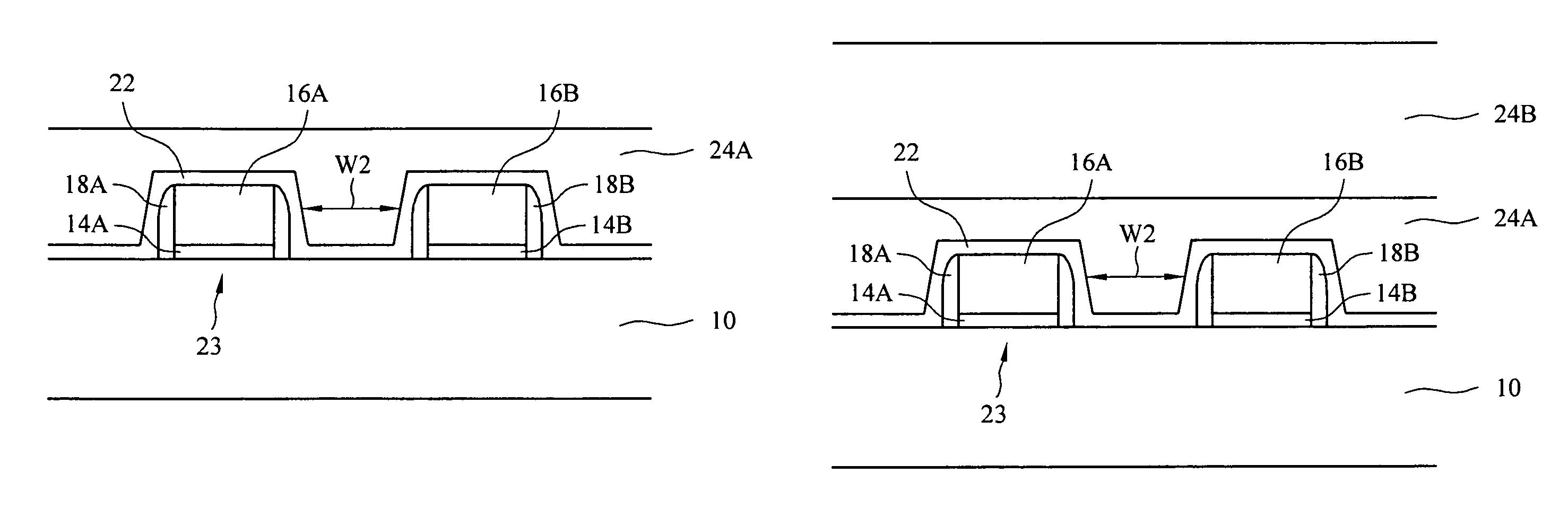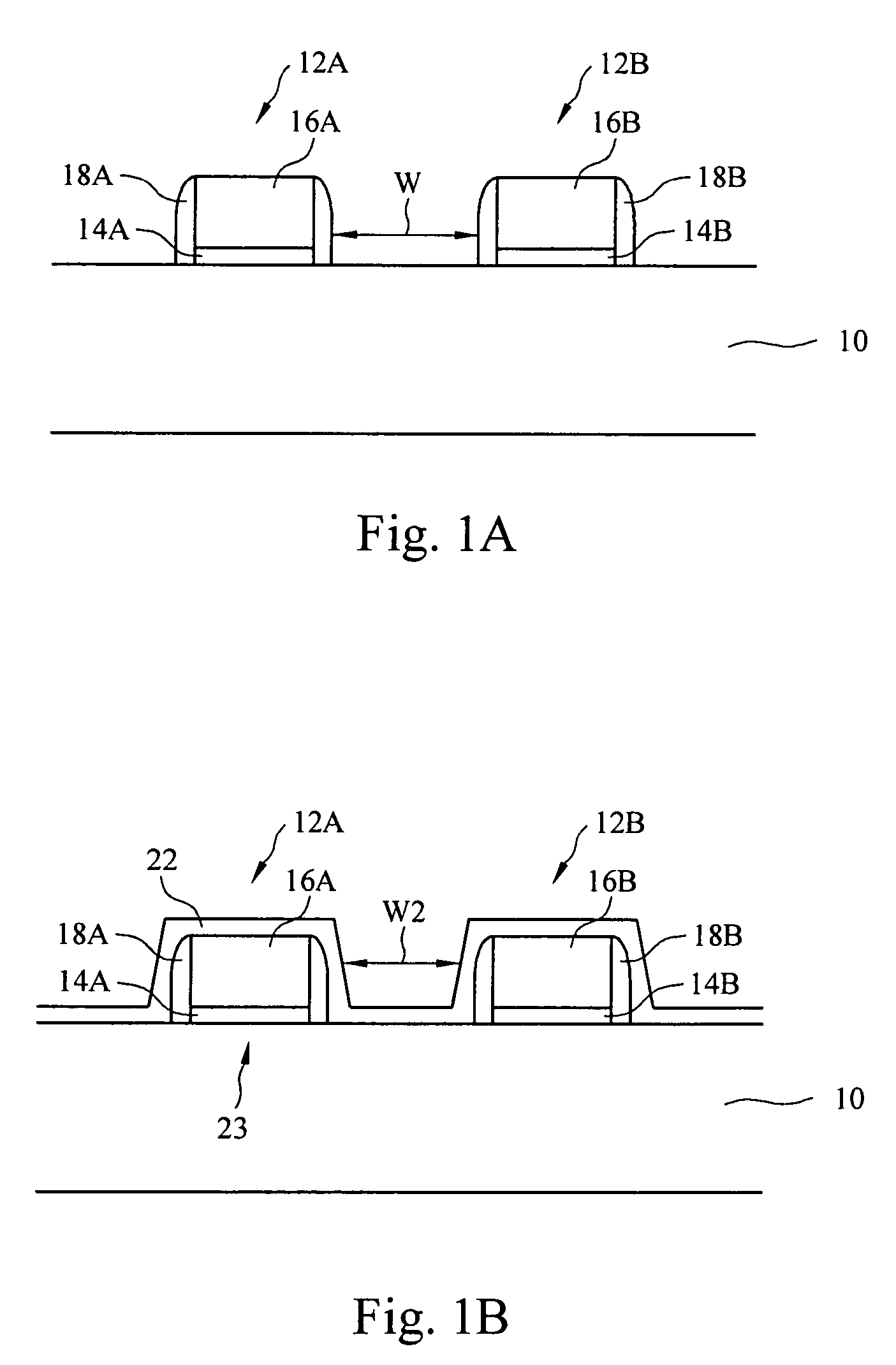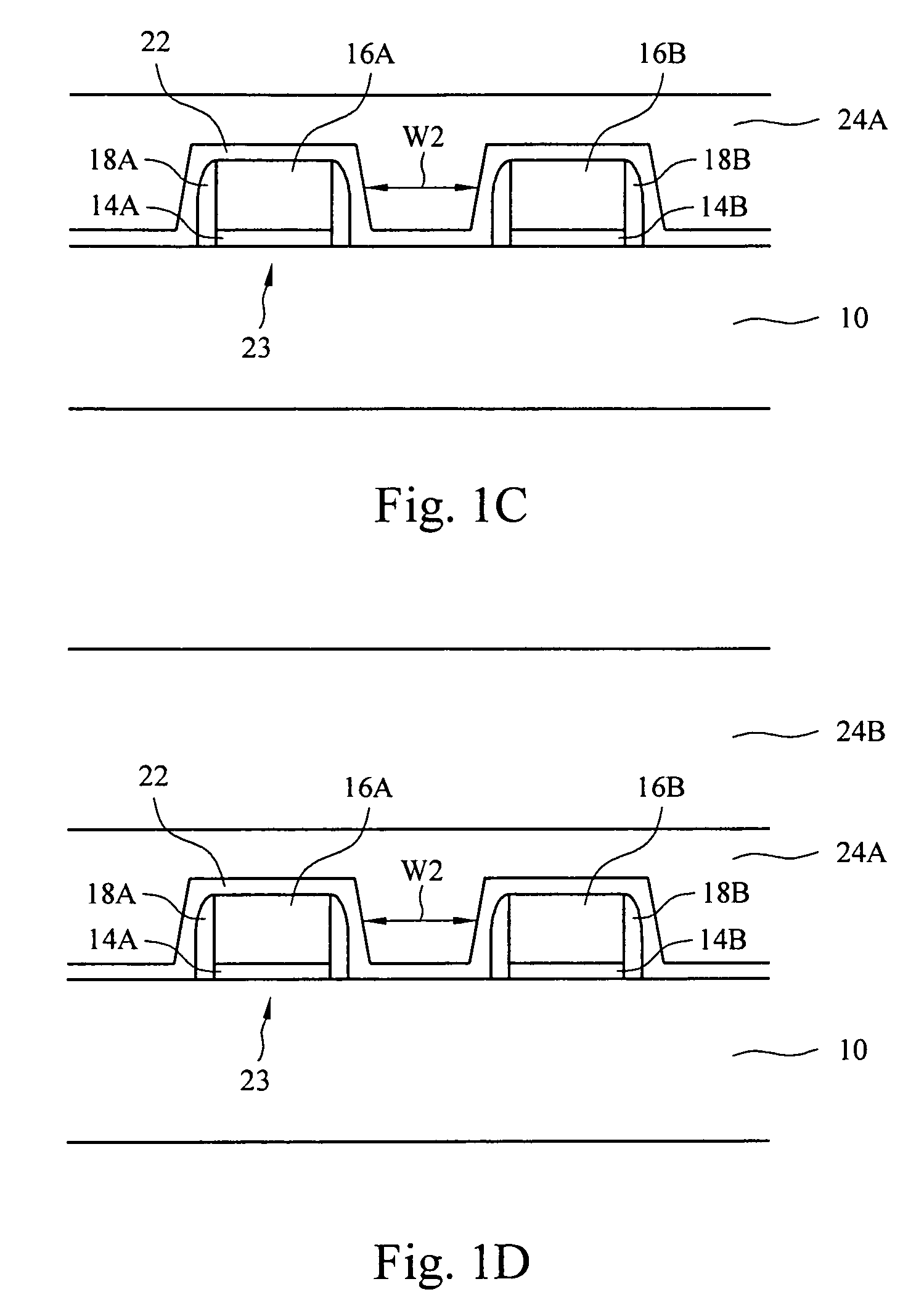HDP-CVD methodology for forming PMD layer
a technology of cvd layer and hdp, which is applied in the direction of chemical vapor deposition coating, coating, semiconductor devices, etc., can solve the problems of significant heating of the wafer, insufficient cooling of the wafer, and prior art hdp-cvd deposition process may induce an unacceptable level of plasma damage in the cmos device, so as to reduce the plasma damage and reduce the process wafer temperature
- Summary
- Abstract
- Description
- Claims
- Application Information
AI Technical Summary
Benefits of technology
Problems solved by technology
Method used
Image
Examples
Embodiment Construction
[0015]According to the present invention an HDP-CVD processing method is presented to improve a gap filling ability in a PMD layer deposition process, for example, avoid or reduce the formation of voids, while reducing plasma damage to CMOS devices and reducing a deposition temperature of the process wafer. It will be appreciated that a single or multi-step HDP-CVD process may be carried out optionally including cooling steps between deposition processes.
[0016]Referring to FIG. 1A, in an exemplary semiconductor manufacturing process for producing a pre-metal dielectric (PMD) layer, a semiconductor substrate 10 is provided including CMOS devices e.g., 12A and 12B, formed on the semiconductor substrate by conventional processes. For example, the semiconductor substrate 10 may include a variety of semiconductor substrates e.g., silicon, silicon on insulator (SOI), stacked SOI (SSOI), stacked SiGe on insulator (S-SiGeOI), SiGeOI, and GeOI, and combinations thereof. It will be appreciate...
PUM
| Property | Measurement | Unit |
|---|---|---|
| temperatures | aaaaa | aaaaa |
| temperatures | aaaaa | aaaaa |
| thickness | aaaaa | aaaaa |
Abstract
Description
Claims
Application Information
 Login to View More
Login to View More - R&D
- Intellectual Property
- Life Sciences
- Materials
- Tech Scout
- Unparalleled Data Quality
- Higher Quality Content
- 60% Fewer Hallucinations
Browse by: Latest US Patents, China's latest patents, Technical Efficacy Thesaurus, Application Domain, Technology Topic, Popular Technical Reports.
© 2025 PatSnap. All rights reserved.Legal|Privacy policy|Modern Slavery Act Transparency Statement|Sitemap|About US| Contact US: help@patsnap.com



